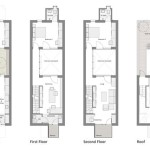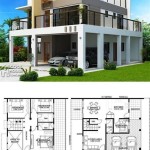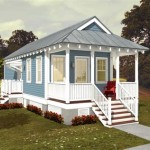Midcentury Modern house plans refer to architectural designs prevalent during the mid-20th century, which had a dynamic impact on the architectural landscape and continue to fascinate modern homeowners. These plans are defined by their clean lines, minimalist approach, and integration of nature, resulting in timeless and functional living spaces.
An iconic example of a Midcentury Modern house is the Farnsworth House, designed by Ludwig Mies van der Rohe in 1945. This glass-enclosed structure seamlessly merges indoor and outdoor spaces, exemplifying the philosophy of bringing nature into the home. Midcentury Modern house plans offer flexibility and adaptability, with modular designs and open floor plans that cater to changing lifestyles.
In this article, we will explore the defining characteristics, benefits, and evolution of Midcentury Modern house plans, providing insights into their continued popularity and how they can enhance modern living.
Midcentury Modern house plans are characterized by several key features that contribute to their timeless appeal and functionality:
- Clean Lines
- Minimalism
- Integration of Nature
- Open Floor Plans
- Emphasis on Natural Light
- Indoor-Outdoor Connection
- Sustainability
- Functionality
These elements combine to create living spaces that are both aesthetically pleasing and practical, meeting the needs of modern homeowners.
Clean Lines
Clean lines are a defining characteristic of Midcentury Modern house plans, contributing to their minimalist and uncluttered aesthetic. This design principle emphasizes straight lines, sharp angles, and geometric forms, creating a sense of order and simplicity.
- Horizontal Lines
Horizontal lines create a sense of length and flow, making spaces feel more spacious and inviting. Midcentury Modern house plans often incorporate horizontal lines in the form of low-slung roofs, wide windows, and horizontal siding.
- Vertical Lines
Vertical lines add height and drama to a space, drawing the eye upwards. They are commonly used in Midcentury Modern architecture to create a sense of balance and proportion, as seen in floor-to-ceiling windows and exposed beams.
- Geometric Shapes
Geometric shapes, such as squares, rectangles, and circles, are frequently used in Midcentury Modern house plans to create a clean and modern look. These shapes can be found in various elements of the home, including windows, doors, and even the overall floor plan.
- Elimination of Ornamentation
Midcentury Modern design emphasizes simplicity and functionality, which means that ornamentation is often kept to a minimum. Clean lines allow the architectural elements and materials to speak for themselves, creating a cohesive and streamlined aesthetic.
The use of clean lines in Midcentury Modern house plans results in homes that are both visually appealing and highly functional, providing a timeless and sophisticated living environment.
Minimalism
Minimalism is a core principle of Midcentury Modern house plans, emphasizing simplicity, functionality, and the elimination of unnecessary elements. This design philosophy aims to create living spaces that are both aesthetically pleasing and practical, focusing on what is essential.
- Decluttered Spaces
Minimalism promotes decluttered and organized spaces that are free from excessive possessions and ornamentation. Midcentury Modern house plans incorporate open floor plans, built-in storage solutions, and multi-purpose furniture to maximize space and reduce clutter.
- Emphasis on Functionality
Every element in a minimalist Midcentury Modern home serves a purpose, eliminating unnecessary decorative features and prioritizing functionality. Furniture is chosen for its comfort and practicality, and appliances are often concealed or integrated into the design to maintain a clean and uncluttered aesthetic.
- Neutral Color Palettes
Neutral color palettes are commonly used in Midcentury Modern house plans to create a sense of calm and spaciousness. White, black, gray, and beige are popular choices, as they provide a backdrop that allows architectural elements and furniture to take center stage.
- Natural Materials
Minimalist Midcentury Modern homes often incorporate natural materials such as wood, stone, and glass to create a warm and inviting atmosphere. These materials bring a sense of the outdoors in and complement the clean lines and simplicity of the design.
Minimalism in Midcentury Modern house plans results in homes that are not only visually appealing but also highly functional and conducive to a comfortable and clutter-free lifestyle.
Integration of Nature
Midcentury Modern house plans emphasize the integration of nature into the living space, blurring the boundaries between indoors and outdoors. This design principle is rooted in the belief that connecting with nature enhances well-being and creates a more harmonious living environment.
- Large Windows and Glass Walls
Large windows and glass walls are signature features of Midcentury Modern house plans, allowing for an abundance of natural light and panoramic views of the surrounding landscape. These expansive windows bring the outdoors in, creating a sense of spaciousness and connection to nature.
- Indoor-Outdoor Living Spaces
Midcentury Modern homes often feature indoor-outdoor living spaces, such as patios, decks, and courtyards, that seamlessly extend the living area beyond the walls of the house. These spaces provide a transition zone between the indoors and outdoors, allowing for seamless indoor-outdoor living and entertaining.
- Natural Materials
Natural materials, such as wood, stone, and brick, are commonly used in Midcentury Modern house plans to create a connection to the natural world. These materials bring warmth and texture to the home, while also complementing the clean lines and minimalist aesthetic of the design.
- Landscaping
Landscaping plays a crucial role in integrating nature into Midcentury Modern house plans. Thoughtful placement of trees, shrubs, and other greenery helps to create a cohesive relationship between the home and its surroundings, enhancing the overall aesthetic and providing privacy.
The integration of nature in Midcentury Modern house plans fosters a harmonious connection between the indoors and outdoors, creating living spaces that are both aesthetically pleasing and conducive to well-being.
Open Floor Plans
Open floor plans are a defining characteristic of Midcentury Modern house plans, creating a sense of spaciousness, fluidity, and connection between different living areas.
- Spaciousness and Flow
Open floor plans eliminate unnecessary walls and partitions, allowing for a more spacious and fluid living environment. This design approach creates a sense of openness and grandeur, making even smaller homes feel more expansive.
- Connection Between Spaces
Open floor plans foster a strong connection between different living areas, such as the living room, dining room, and kitchen. This interconnectedness promotes a sense of community and togetherness, making it easier for family members and guests to interact and socialize.
- Natural Light and Airflow
Open floor plans often incorporate large windows and glass walls, allowing for an abundance of natural light to penetrate deep into the home. The absence of walls also promotes better airflow, creating a more comfortable and healthier living environment.
- Flexibility and Adaptability
Open floor plans offer greater flexibility and adaptability compared to traditional closed-off rooms. The open layout allows for easy reconfiguration of furniture and spaces, making it easier to accommodate changing needs and lifestyles over time.
Open floor plans in Midcentury Modern house plans enhance the overall livability and functionality of the home, creating a spacious, connected, and adaptable living environment.
Emphasis on Natural Light
Midcentury Modern house plans emphasize the use of natural light to create bright, airy, and inviting living spaces. This focus on natural light is rooted in the belief that it enhances well-being, reduces energy consumption, and creates a stronger connection to the outdoors.
- Expansive Windows and Glass Walls
Large windows and glass walls are signature features of Midcentury Modern house plans, allowing for an abundance of natural light to penetrate deep into the home. These expansive windows not only provide stunning views of the surrounding landscape but also blur the boundaries between indoors and outdoors, creating a sense of spaciousness and connection to nature.
- Clerestory Windows
Clerestory windows are high-placed windows that run along the upper portion of a wall or roof, allowing natural light to enter from above. These windows are commonly used in Midcentury Modern homes to illuminate interior spaces without compromising privacy or creating excessive heat gain.
- Skylights
Skylights are openings in the roof that allow natural light to flood into a space from directly overhead. They are a particularly effective way to brighten up dark or windowless areas, such as hallways, bathrooms, and kitchens.
- Orientation and Placement
Midcentury Modern house plans are often designed to maximize natural light by carefully considering the orientation and placement of the home on the building site. Architects position windows and glass walls to capture optimal sunlight at different times of the day, ensuring that the home is filled with natural light throughout the year.
The emphasis on natural light in Midcentury Modern house plans results in homes that are not only visually appealing but also healthy and sustainable, creating living spaces that are both comfortable and energy-efficient.
Indoor-Outdoor Connection
Midcentury Modern house plans prioritize the seamless integration of indoor and outdoor spaces, creating a strong connection between the home and its surroundings.
- Expansive Windows and Glass Walls
Large windows and glass walls are a signature feature of Midcentury Modern house plans, allowing for an abundance of natural light to penetrate deep into the home while also blurring the boundaries between indoors and outdoors. These expansive windows provide stunning views of the surrounding landscape and create a sense of spaciousness and openness.
- Indoor-Outdoor Living Spaces
Midcentury Modern homes often feature indoor-outdoor living spaces, such as patios, decks, and courtyards, that extend the living area beyond the walls of the house. These spaces provide a transition zone between the indoors and outdoors, allowing for seamless indoor-outdoor living and entertaining. They are often designed with comfortable seating, outdoor kitchens, and fire pits, creating inviting spaces for relaxation and socializing.
- Operable Walls and Doors
Operable walls and doors, such as sliding glass doors and folding glass walls, are commonly used in Midcentury Modern house plans to further enhance the indoor-outdoor connection. These movable elements allow for easy transition between indoor and outdoor spaces, creating a sense of openness and flexibility. When opened, they blur the boundaries between the interior and exterior, allowing for seamless flow of air, light, and people.
- Courtyards and Atriums
Courtyards and atriums are enclosed outdoor spaces that are incorporated into the design of Midcentury Modern homes. They provide a private and sheltered outdoor oasis, often featuring lush landscaping, water elements, and natural light. Courtyards and atriums bring the outdoors into the heart of the home, creating a harmonious connection between the indoor and outdoor living spaces.
The strong indoor-outdoor connection in Midcentury Modern house plans fosters a sense of harmony between the built environment and nature, enhancing the overall livability and well-being of the occupants.
Sustainability
Midcentury Modern house plans often incorporate sustainable design principles to minimize environmental impact and promote energy efficiency. These homes are designed to be in harmony with their surroundings, using natural resources responsibly and reducing waste.
One key aspect of sustainability in Midcentury Modern house plans is the use of passive solar design. This approach takes advantage of the sun’s natural energy to heat and cool the home, reducing reliance on mechanical systems. Large windows and glass walls are strategically placed to capture sunlight during the winter months, while overhangs and shading devices help to block excessive heat gain during the summer.
Midcentury Modern homes also emphasize the use of sustainable building materials. Natural materials, such as wood, stone, and brick, are often used for their durability and low environmental impact. Recycled and reclaimed materials may also be incorporated into the design to minimize waste and promote resource conservation.
In addition, Midcentury Modern house plans often include features that promote water conservation. Low-flow plumbing fixtures, rainwater harvesting systems, and drought-tolerant landscaping are examples of sustainable practices that can reduce water consumption and minimize the environmental footprint of the home.
Overall, the focus on sustainability in Midcentury Modern house plans contributes to the creation of homes that are not only aesthetically pleasing but also environmentally responsible, promoting a healthier and more sustainable lifestyle.
Functionality
Functionality is a cornerstone of Midcentury Modern house plans, with every element designed to enhance the comfort, convenience, and efficiency of daily living. Open floor plans, built-in storage solutions, and multi-purpose furniture are just a few examples of how these homes prioritize practicality and usability.
Open floor plans eliminate unnecessary walls and partitions, creating spacious and fluid living areas. This design approach allows for easy flow of traffic, promotes interaction between family members and guests, and maximizes natural light penetration. Open floor plans also provide greater flexibility in furniture arrangement and can be easily adapted to changing needs and lifestyles.
Built-in storage solutions are another hallmark of functional Midcentury Modern house plans. These clever storage elements are seamlessly integrated into the design of the home, providing ample space for belongings without sacrificing style. Built-in shelves, cabinets, drawers, and closets maximize vertical space and maintain a clean and organized aesthetic. They also help to reduce clutter and keep frequently used items within easy reach.
Multi-purpose furniture is another ingenious feature of Midcentury Modern house plans. These versatile pieces serve multiple functions, saving space and enhancing practicality. For example, a coffee table with built-in storage can double as a storage ottoman, while a sofa bed can provide additional sleeping accommodations for guests. Multi-purpose furniture allows homeowners to make the most of their space and create flexible living arrangements that adapt to their needs.
The emphasis on functionality in Midcentury Modern house plans results in homes that are not only visually appealing but also highly livable and efficient, creating spaces that support a comfortable and convenient lifestyle.










Related Posts








